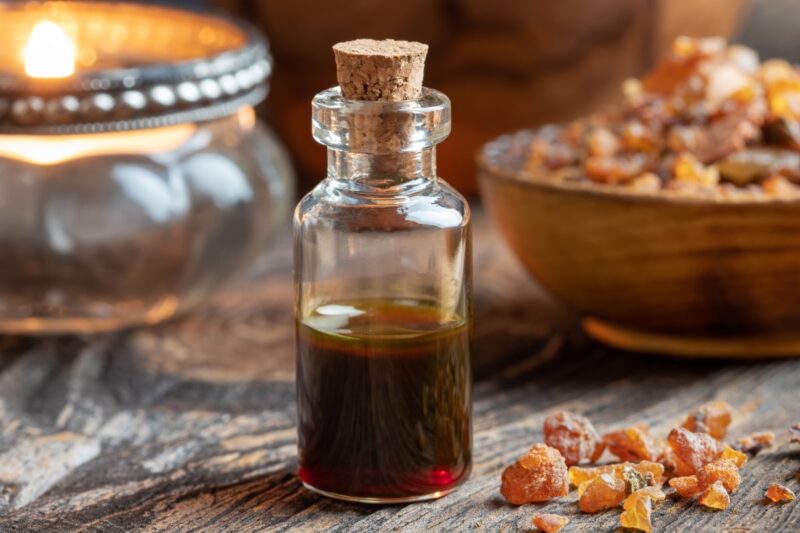From the golden pages of ancient texts to the modern-day aromas of luxury perfumeries, there is one resin that has intertwined itself with the tapestry of human civilization for millennia: myrrh. This fragrant gum, often associated with stories of kings, divine beings, and sacred rituals, holds a history that is as rich as its scent.
But where does this illustrious substance originate from, and how has its journey from tree to treasure evolved over time? Join us as we explore the fascinating world of myrrh, tracing its roots, its path through history, and its enduring significance in contemporary society.
The Historical Origins of Myrrh
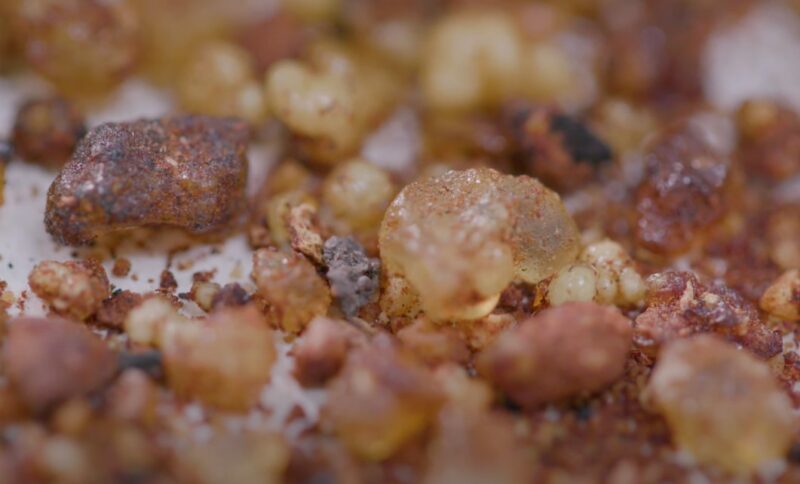
From the sunbaked lands of Mesopotamia to the banks of the Nile, ancient civilizations have long recognized the significance of myrrh. In Egypt, it was employed not just in religious ceremonies but also in embalming rituals, revealing its diverse applications.
Mesopotamian texts often reference this substance in their medicinal scrolls, pointing to its therapeutic value. Beyond these two mighty empires, cultures around the Red Sea and the Mediterranean also incorporated this gum into their practices.
They were drawn to its aromatic qualities, and many stories from antiquity detail its importance in spiritual and therapeutic contexts.
Religious Scriptures
The sacred scriptures of many religions, notably the Bible, are peppered with mentions of this resin. In Christian tradition, it is famously one of the gifts brought to the infant Jesus by the Magi. This gift symbolized suffering and death, foreshadowing the eventual crucifixion.
In addition to its Christian symbolism, it finds mention in the Jewish Talmud and various Islamic traditions. Its consistent presence in these spiritual texts underscores its revered status throughout history and across different cultures.
Engaging with Local Communities
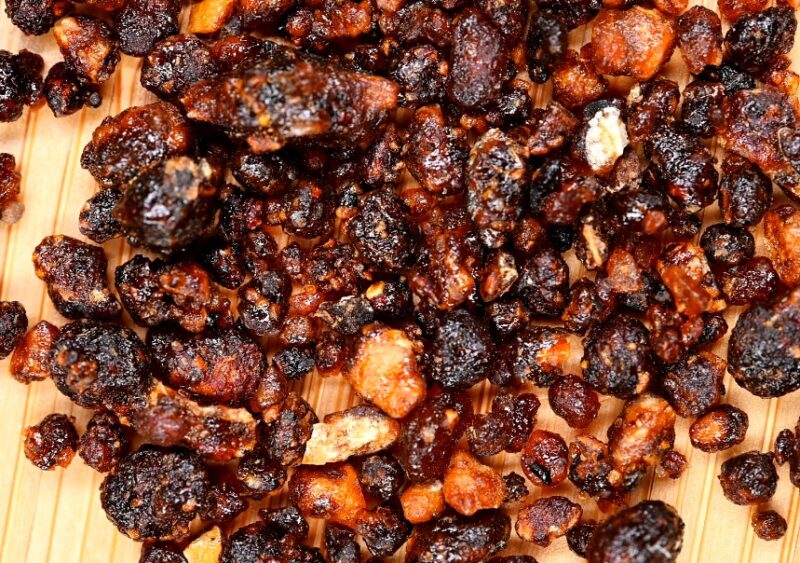
Local communities living near Commiphora forests have been guardians of the resin’s secrets for centuries. Their methods, passed down generations, are a blend of art, science, and intuition. As we look to the future, it’s essential to engage with and respect this indigenous knowledge.
By collaborating with these communities, we can bridge the gap between age-old techniques and modern methods. Their insights can enhance sustainability efforts, ensuring that the trees and the traditions surrounding the resin thrive.
The global market’s demand has often overshadowed the rights and needs of local harvesters. Fair trade initiatives are now stepping in to ensure that these communities receive a just share of the profits.
Steps in this direction include:
- Establishing co-operatives to give harvesters a stronger negotiating position.
- Implementing transparent pricing mechanisms.
- Providing access to global markets, ensuring that the benefits of trade are equitably distributed.
The Botanical Source and Processing
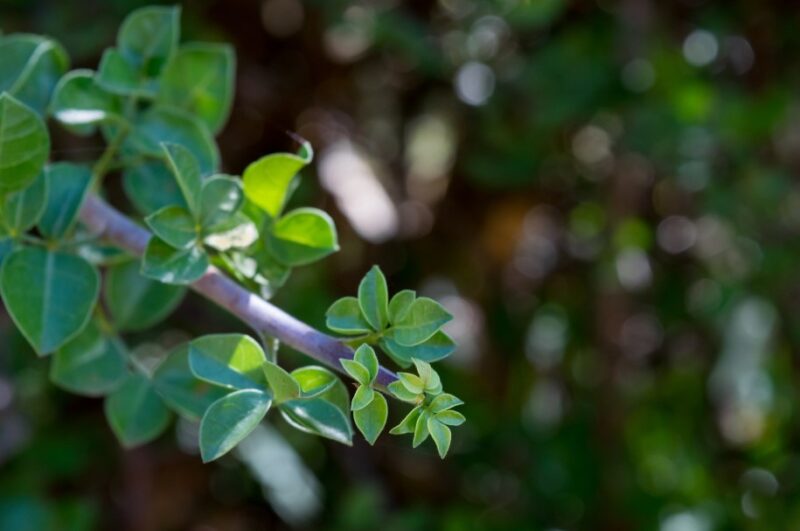
So where does this treasured gum come from? Look no further than the Commiphora species. The gum is harvested through a process called tapping.
This involves making incisions in the tree’s bark. Over time, the tree responds by exuding a gum which, when hardened, is collected. This process is both an art and a science, with the timing and technique greatly influencing the quality of the resin.
From Tree to Trade
Once harvested, the resin undergoes a refinement process. This involves:
- Cleaning: Removing impurities and bark.
- Grading: Based on color, purity, and aroma.
- Packaging: Usually in tightly sealed containers to retain its fragrance.
After processing, it finds its way into various markets. Historically, camel caravans and maritime routes played a crucial role in its trade. Today, while the methods of transport have evolved, its allure remains unchanged, making it a sought-after commodity in various industries.
Medicinal and Therapeutic Uses
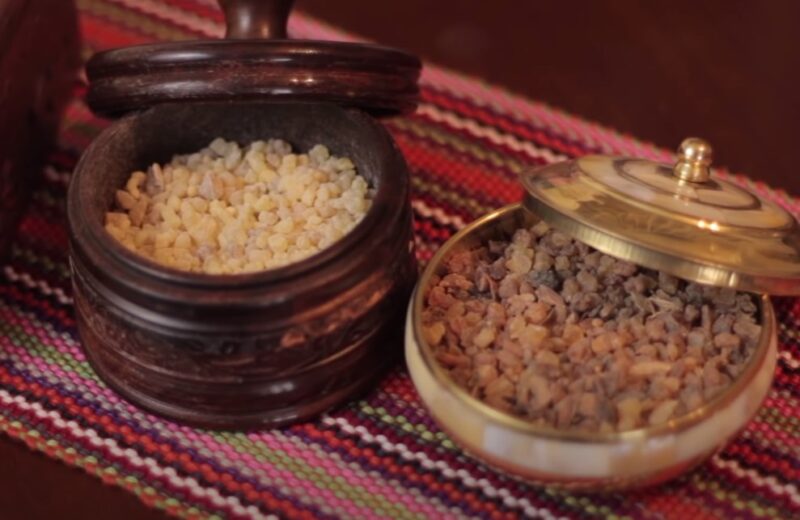
While its religious and ceremonial significance is well-documented, the therapeutic value is equally compelling. Historically, it was a staple in ancient medicine cabinets, used for its antiseptic, analgesic, and anti-inflammatory properties.
Today, its medicinal legacy continues, especially in traditional medicine systems.
It finds its place in various ointments, tinctures, and even oral preparations. Modern research too, often delves into understanding its compounds and potential health benefits.
Cosmetic and Fragrance Industries
The resin’s aromatic qualities have made it a favorite in the world of perfumery and cosmetics. In perfumes, it imparts a warm, earthy scent, often acting as a base note. In cosmetics, it’s valued not just for its fragrance but also for its potential skincare benefits.
As a testament to its enduring appeal:
- Many luxury perfume brands feature it as a key ingredient.
- Natural skincare brands often include it for its supposed rejuvenating qualities.
- Artisanal soap makers value its unique scent profile.
Environmental Concerns and Sustainability
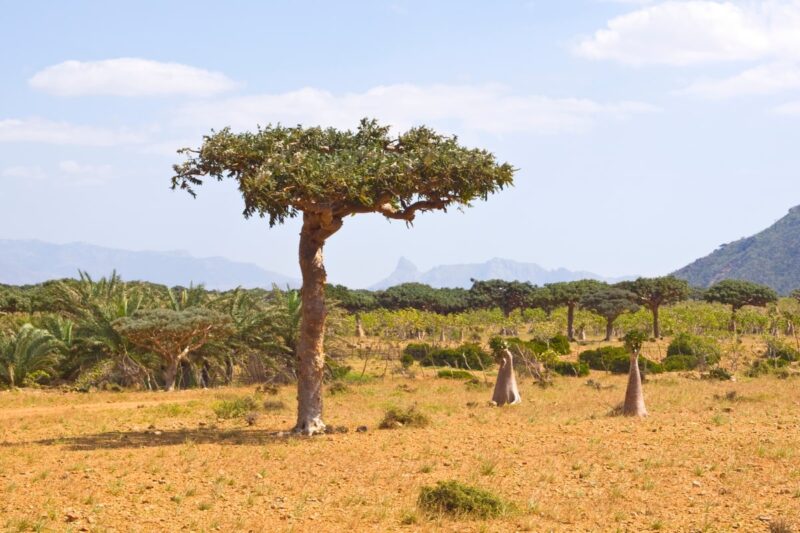
With rising demand, there’s increased pressure on the Commiphora trees. Over-harvesting can lead to reduced gum yield, or worse, can harm the tree permanently.
Additionally, factors like habitat destruction and climate change further threaten these trees.
It’s crucial to understand that unchecked harvesting can not only diminish the quality of the resin but also push these trees towards endangerment. Sustainable practices are the need of the hour to ensure that the resin remains available for future generations.
Steps Towards Sustainable Harvesting
Recognizing the looming threats, many regions have started to promote sustainable harvesting. Some steps being taken include:
- Educating harvesters on optimal tapping techniques to ensure the tree remains healthy.
- Implementing seasonal restrictions on harvesting to allow trees adequate rest and recovery time.
- Reforestation efforts, wherein new Commiphora saplings are planted to counteract the effects of deforestation.
A Symbol Beyond Trade
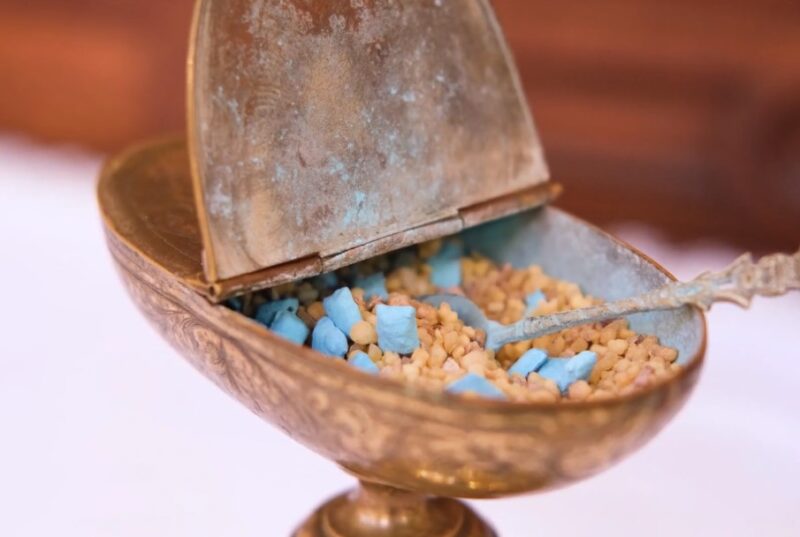
While its trade and applications are vast, the cultural and spiritual resonance of the resin is profound. It has been burnt in temples, churches, and mosques, serving as a medium connecting the material and the spiritual worlds. Its use in religious ceremonies isn’t just restricted to ancient times.
Even today, in various parts of the world, it is used in religious festivals, ceremonies, and rites, echoing a bond of devotion that has lasted millennia.
Art, Literature, and Beyond
The resin’s influence extends into the realms of art and literature. From ancient poetry to modern prose, its mention evokes a sense of mystery, history, and divinity. It has been painted on canvas, sung about in songs, and referenced in countless literary works.
Such frequent cultural mentions emphasize its significance beyond trade and applications. It stands as a symbol of history, culture, and human expression, woven deeply into the fabric of civilizations past and present.
Technological Advancements in Harvesting
As we step into a technologically-driven era, innovations in the way we harvest and process the resin are inevitable. Precision agriculture, powered by drones and satellite imagery, is helping harvesters identify the best times and areas to tap the trees.
Advancements in molecular biology are paving the way for improved gum yields without compromising the health of the Commiphora trees.
By understanding the tree’s genetic makeup, scientists aim to devise strategies that maximize resin production while ensuring sustainability.
New Avenues in Research and Applications
Contemporary research is continually uncovering new potential applications for the resin. The realms of biotechnology and pharmaceuticals are abuzz with studies aiming to tap into its anti-microbial and anti-inflammatory properties.
Some potential breakthroughs include:
- Using it as a natural preservative in food and cosmetics due to its anti-microbial properties.
- Exploring its potential in cancer research, given some compounds in it have shown promise in inhibiting tumor growth in preliminary studies.
FAQs
Why is myrrh often mentioned alongside frankincense?
Both myrrh and frankincense are aromatic resins used in ancient times for religious rituals, medicine, and perfumery. They were highly prized commodities in ancient trade routes and are often mentioned together in historical texts, including the Bible.
How can I ensure that I’m buying ethically sourced myrrh?
It’s advised to buy from reputable suppliers who can trace the source of their myrrh and adhere to sustainable harvesting practices. Certifications and third-party verifications can also be indicators of ethical sourcing.
Do animals play a role in the myrrh ecosystem?
Yes, animals like goats can sometimes feed on the leaves of myrrh trees, and certain insects might be attracted to the resin. Their interactions can impact the health and productivity of the tree.
How does the age of a myrrh tree influence its resin production?
Older trees tend to produce a richer and more aromatic resin. Younger trees can still yield myrrh, albeit in potentially smaller quantities or different qualities.
Do different Commiphora species produce distinct myrrh variants?
Yes, while the primary source of myrrh is Commiphora myrrha, other species can produce resins with slightly different aromas, textures, or medicinal properties.
Wrapping Up
Myrrh, with its intoxicating aroma and multifaceted applications, is more than just a resin—it’s a symbol of our shared human heritage. From the Commiphora trees of northeastern Africa and the Arabian Peninsula to the bustling markets of modern cities, its tale is one of reverence, commerce, and innovation.
Ensuring its future demands a balance of sustainable practices, community engagement, and continued reverence for its legacy. For in understanding and appreciating where myrrh comes from, we not only honor its past but also pave the way for its enduring future.
Our website offers interesting insights on similar subjects.








